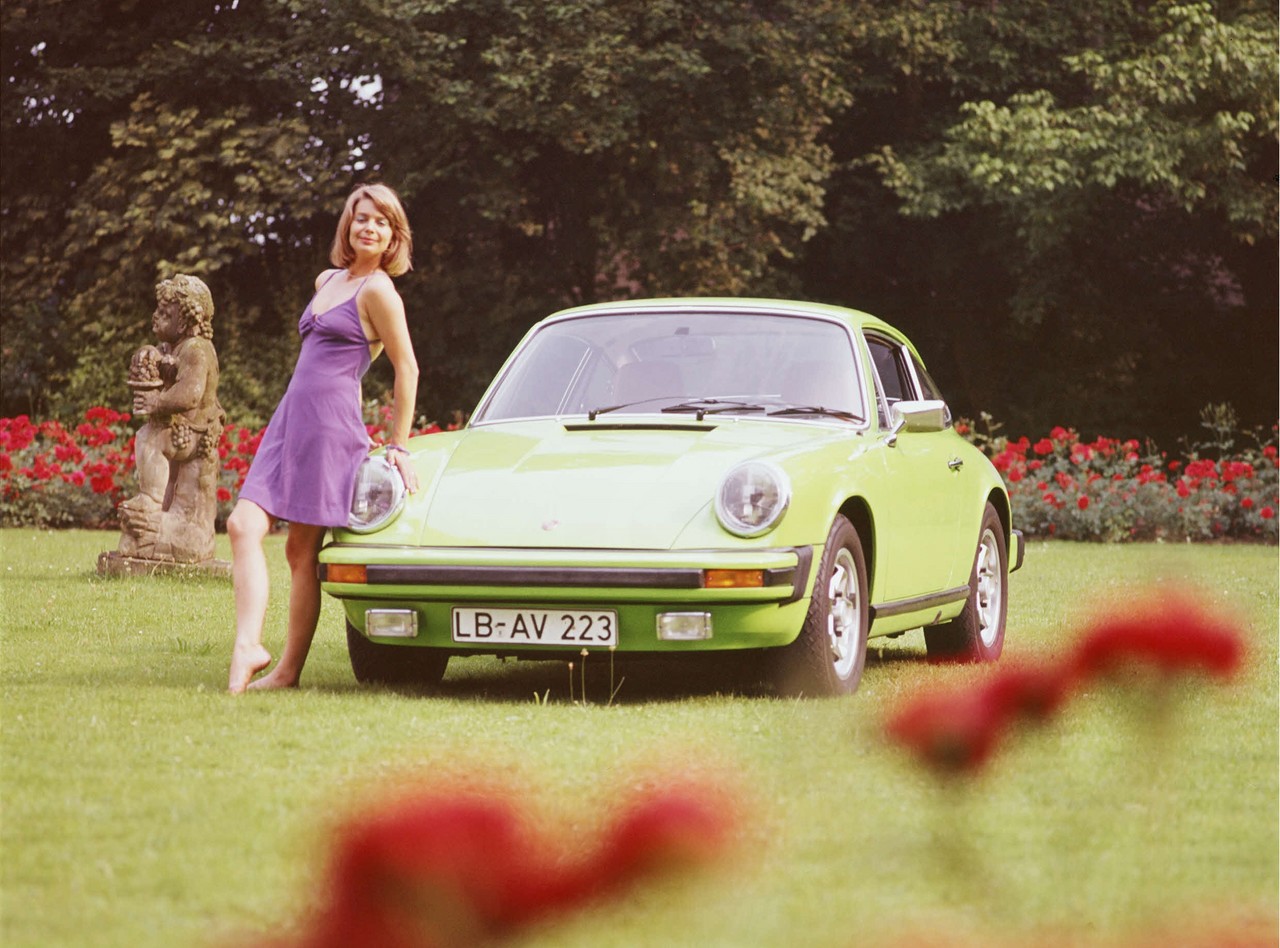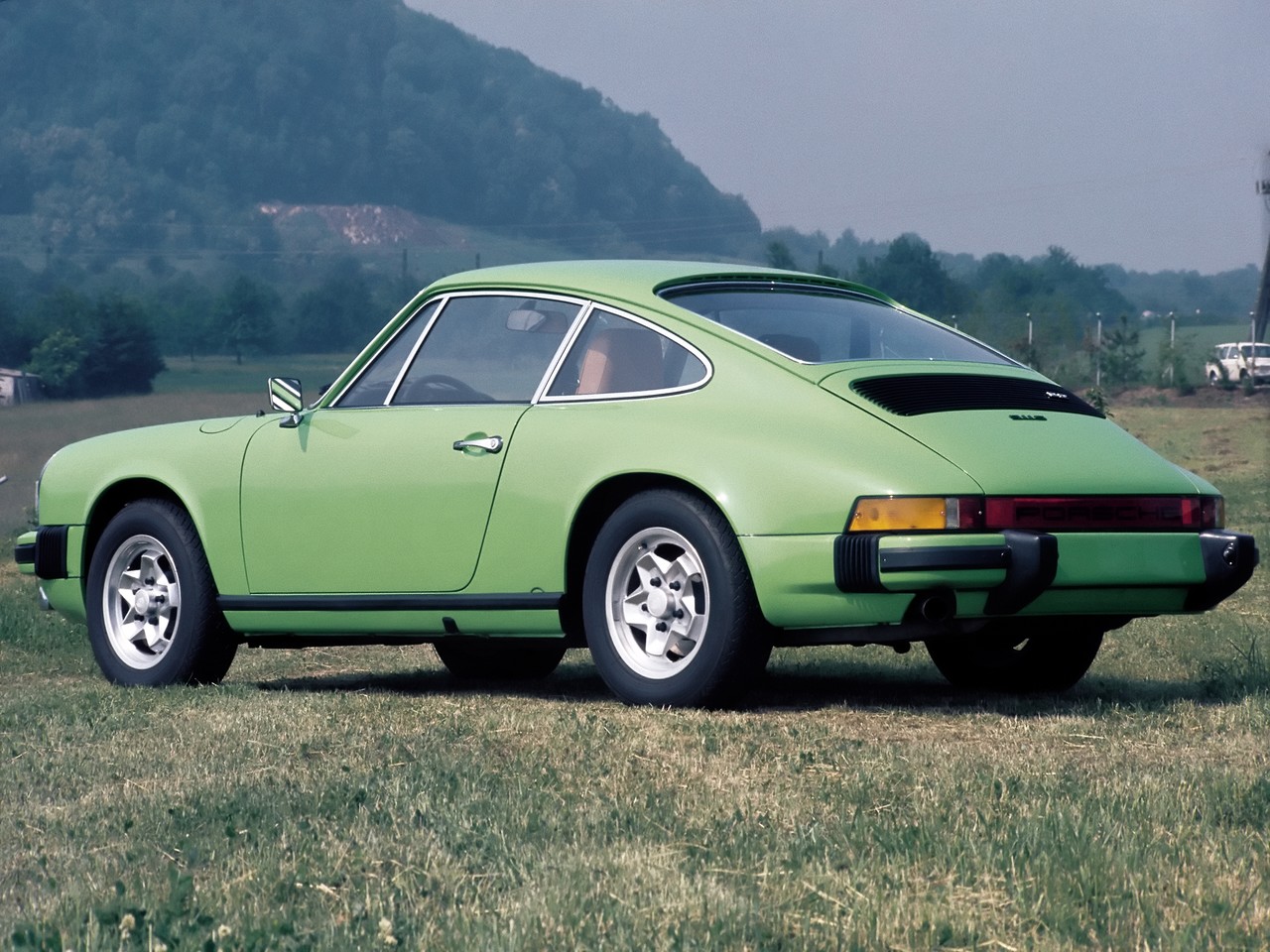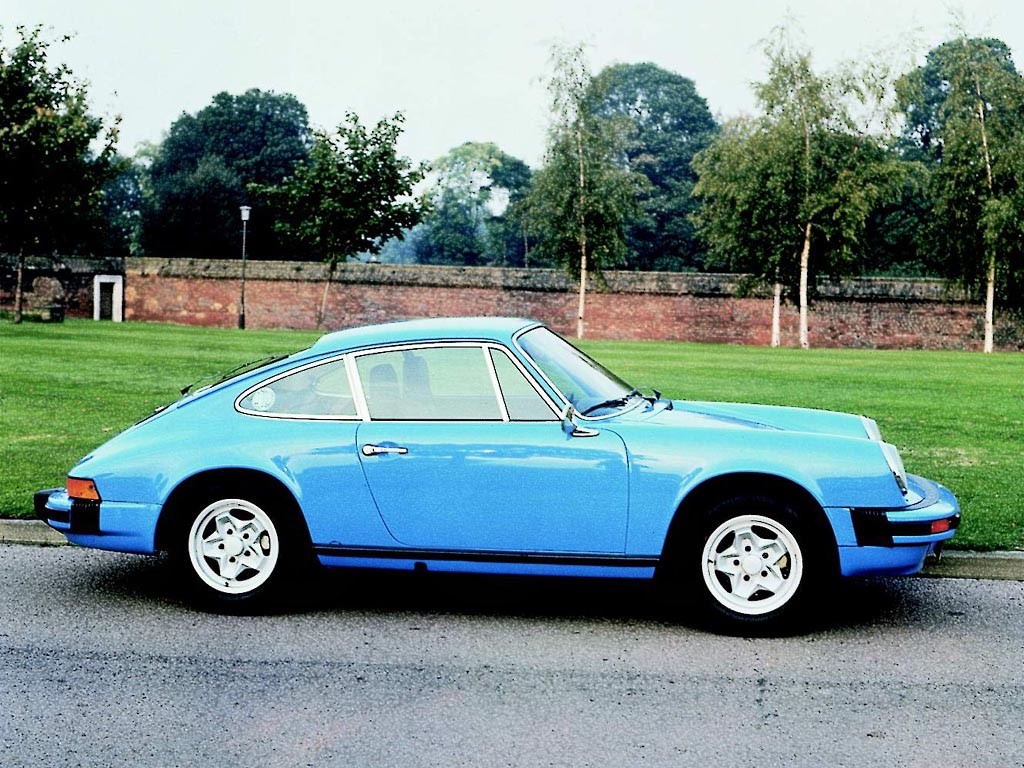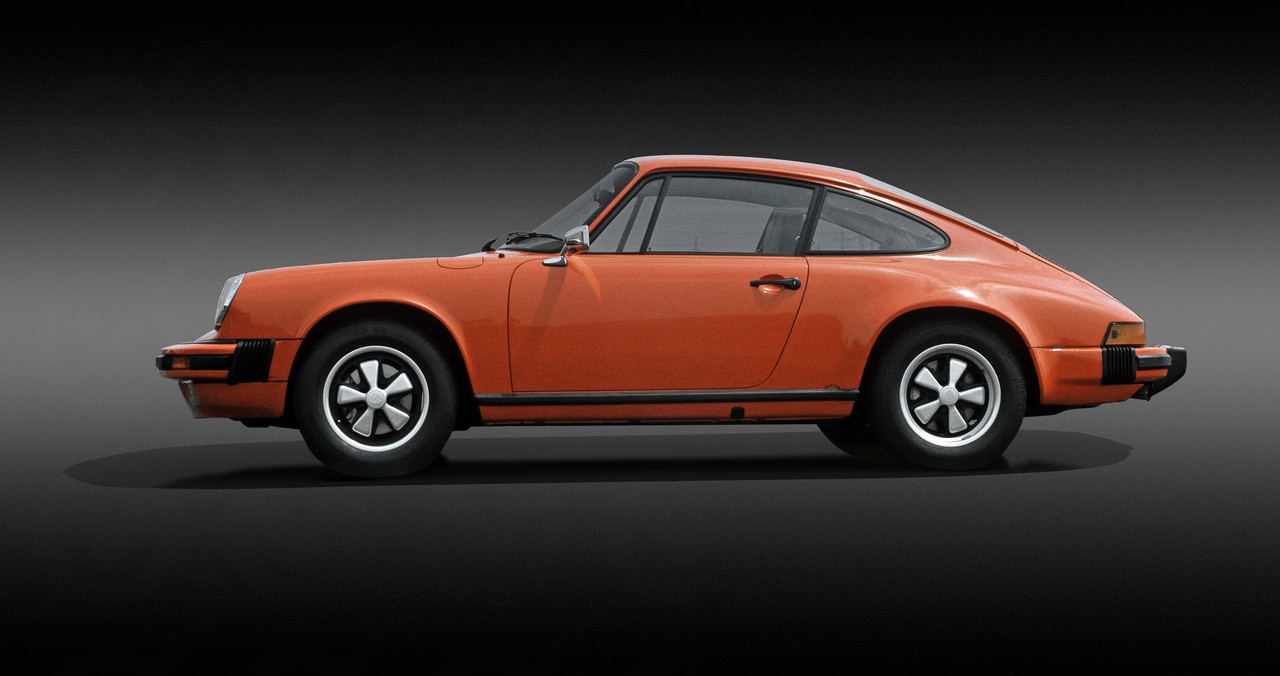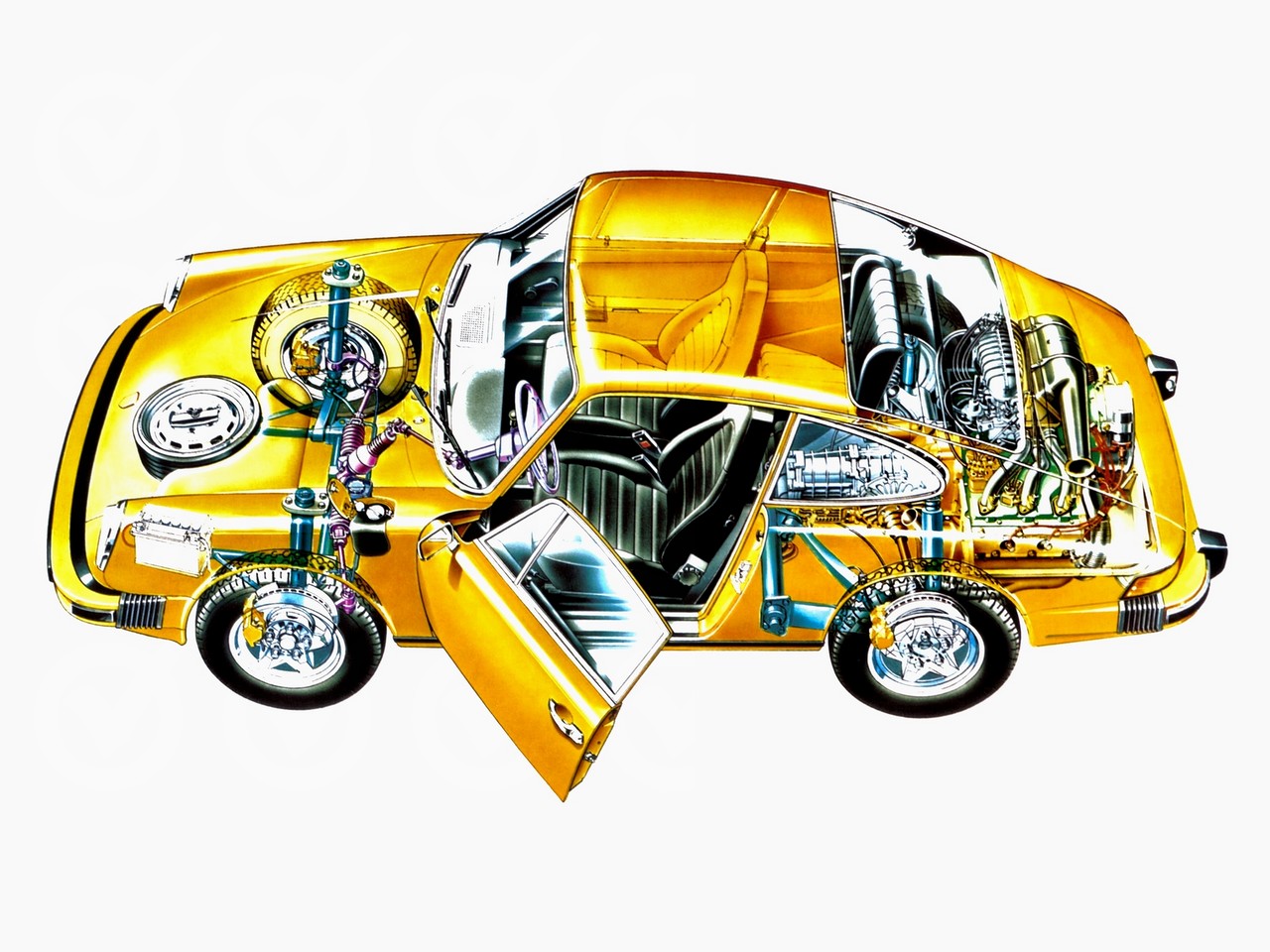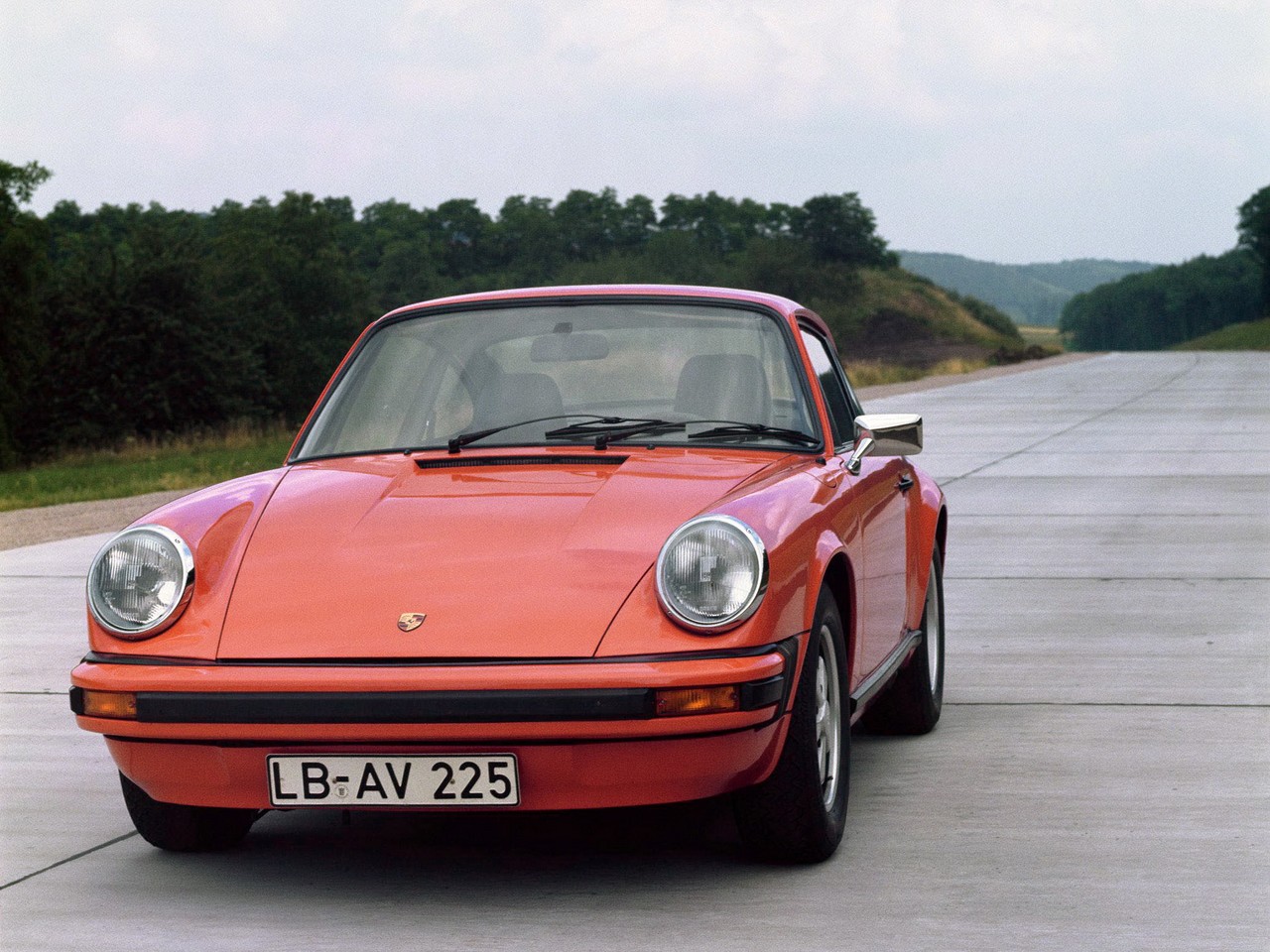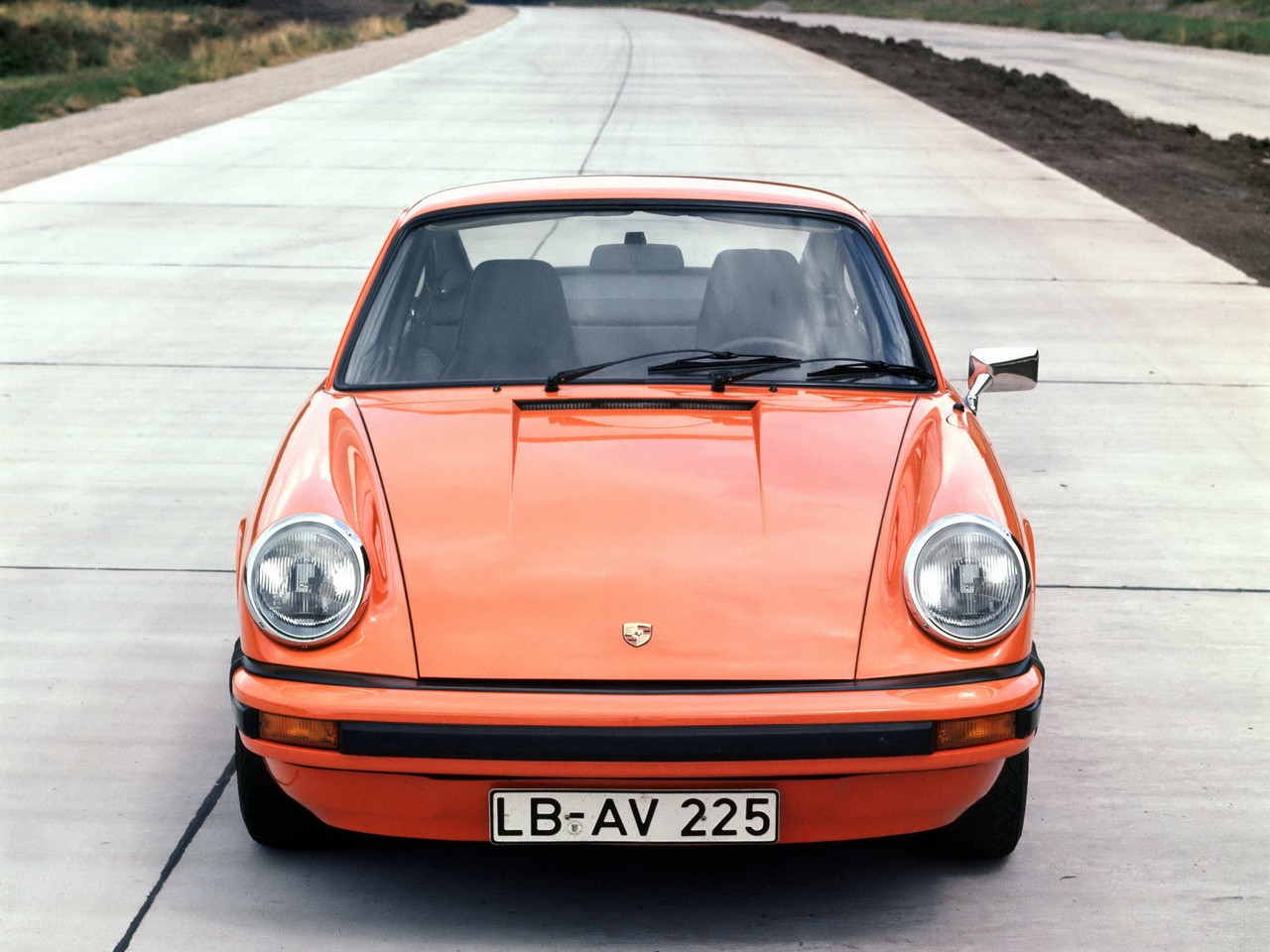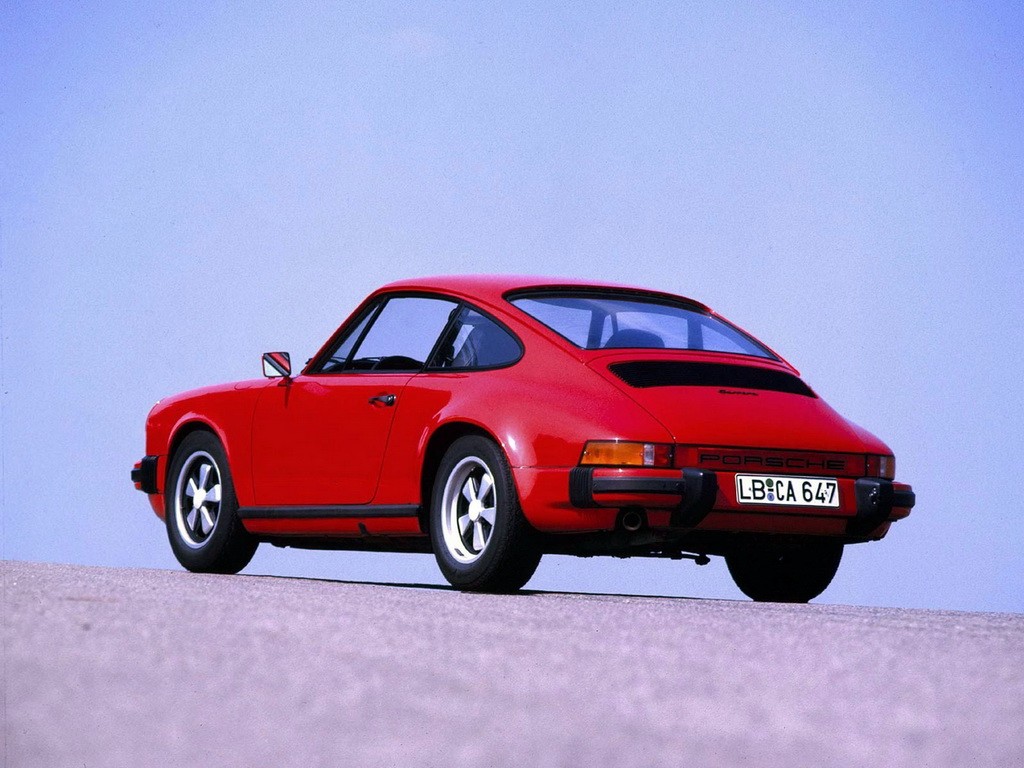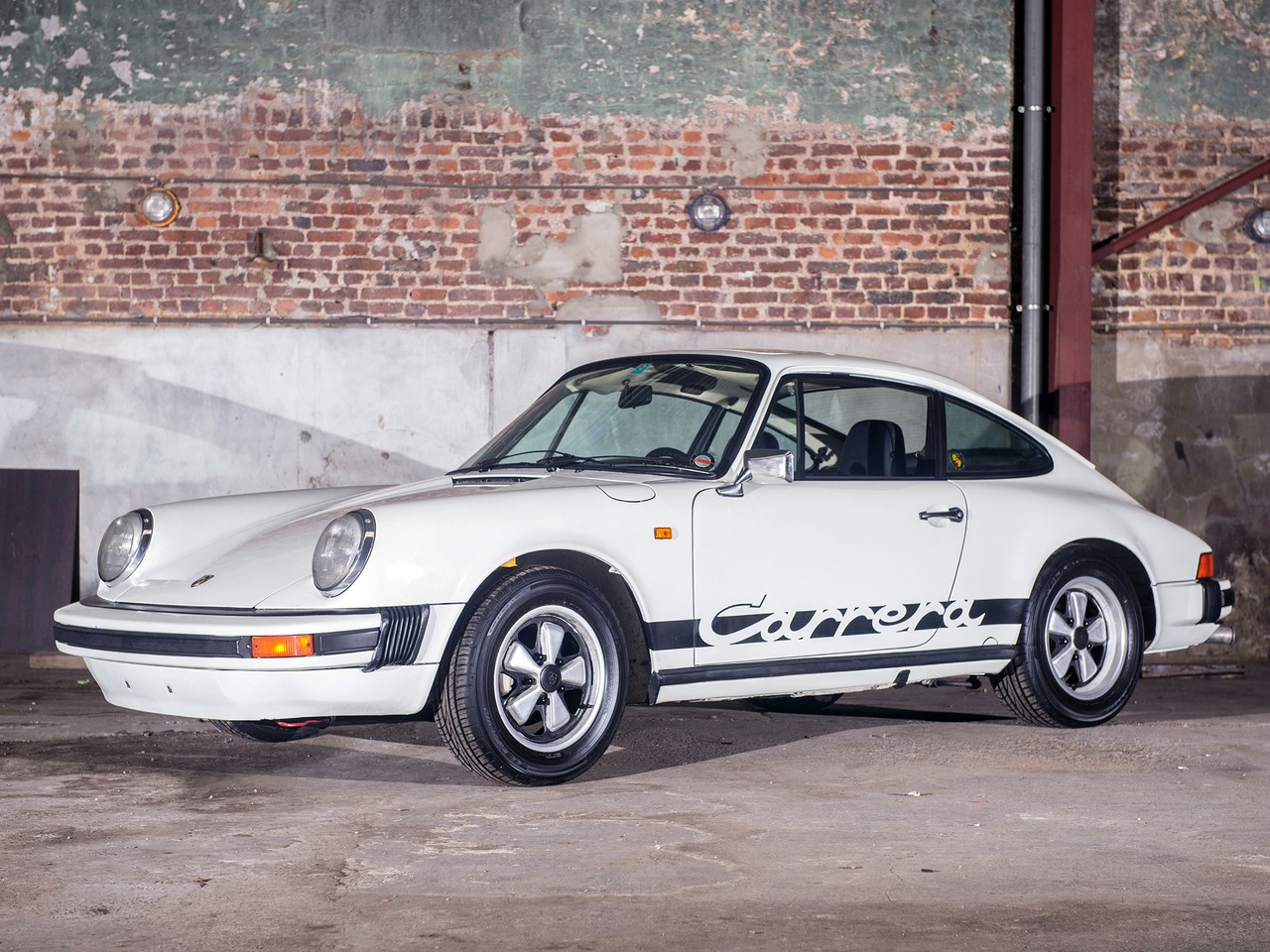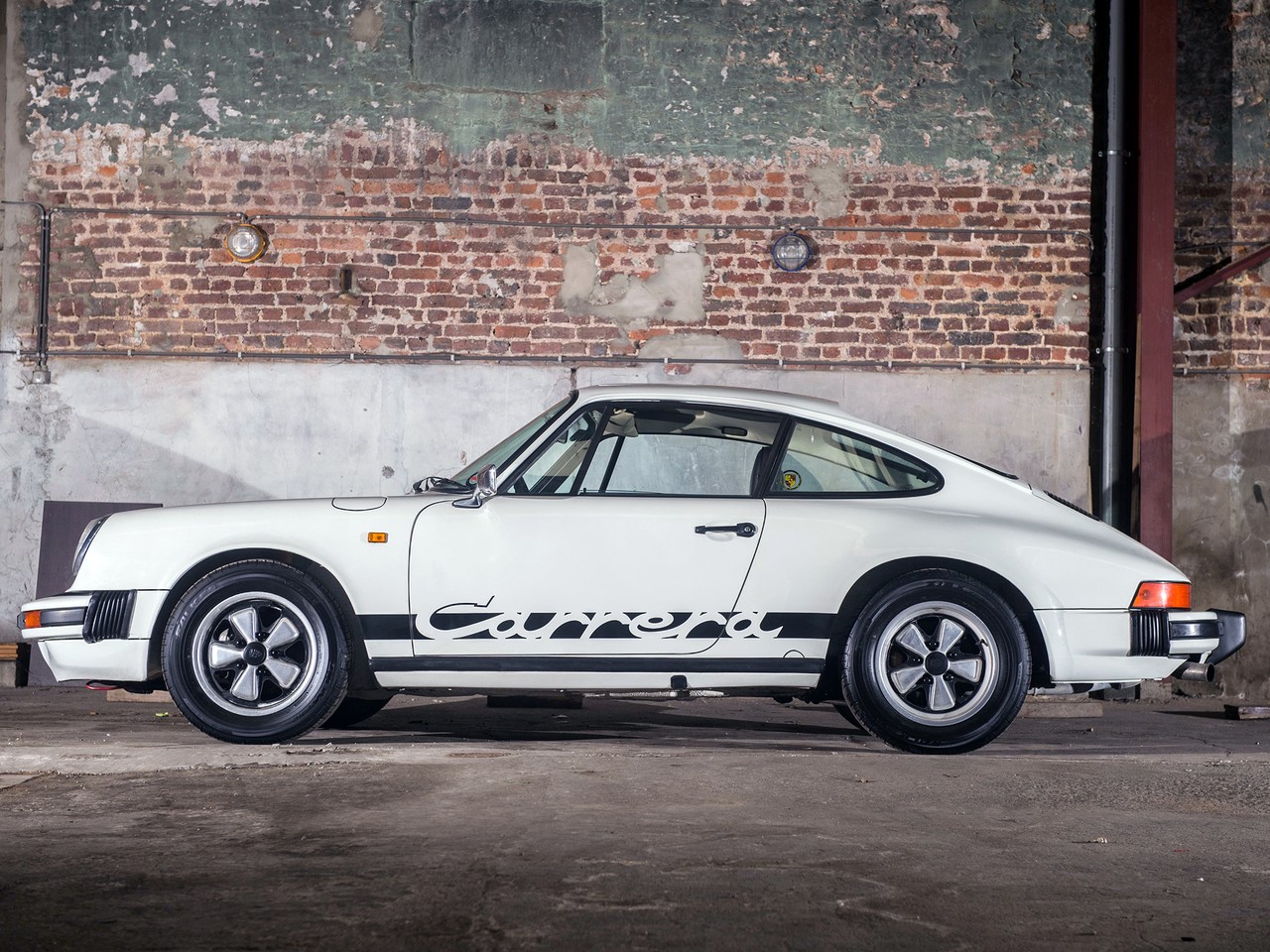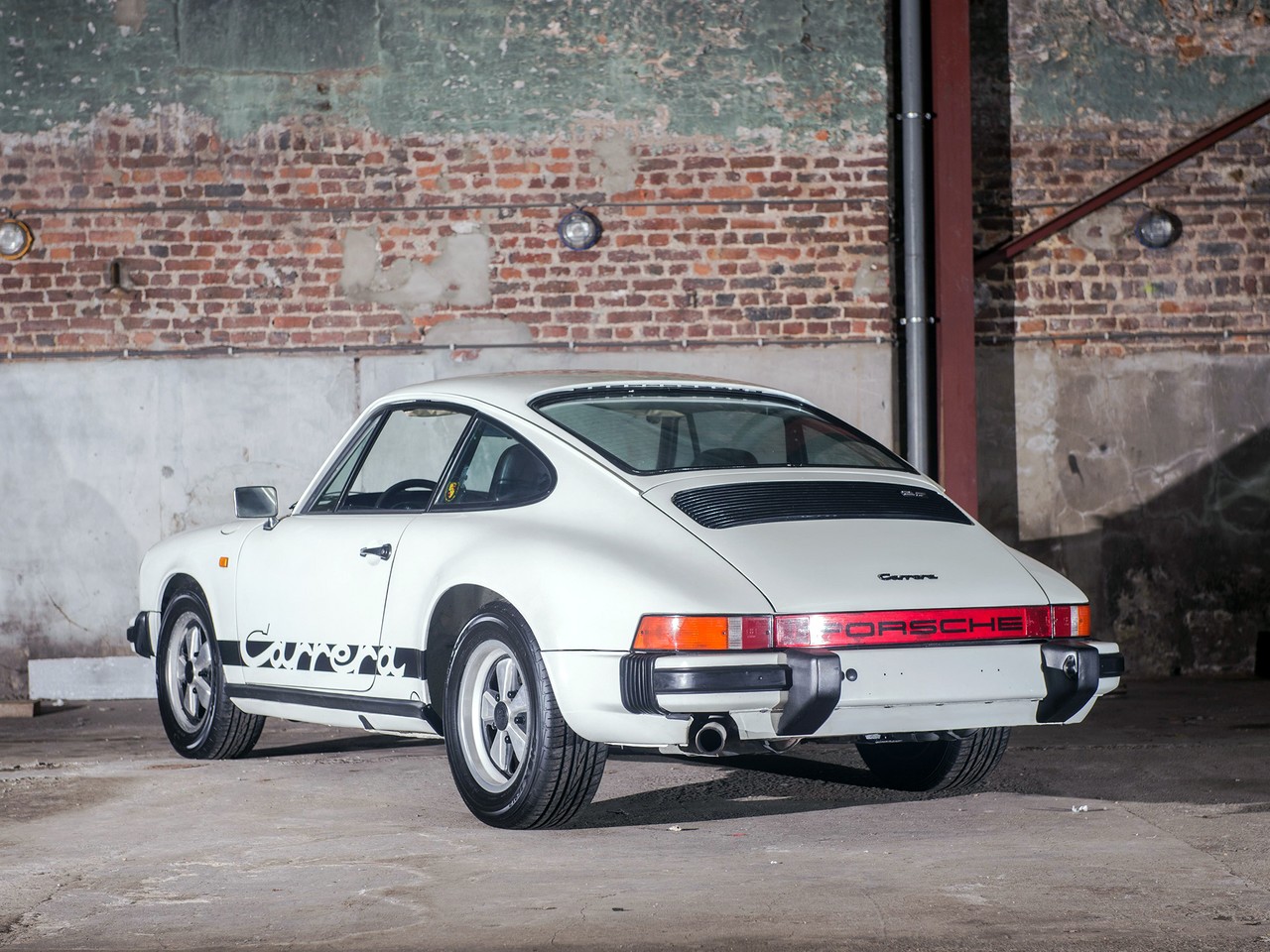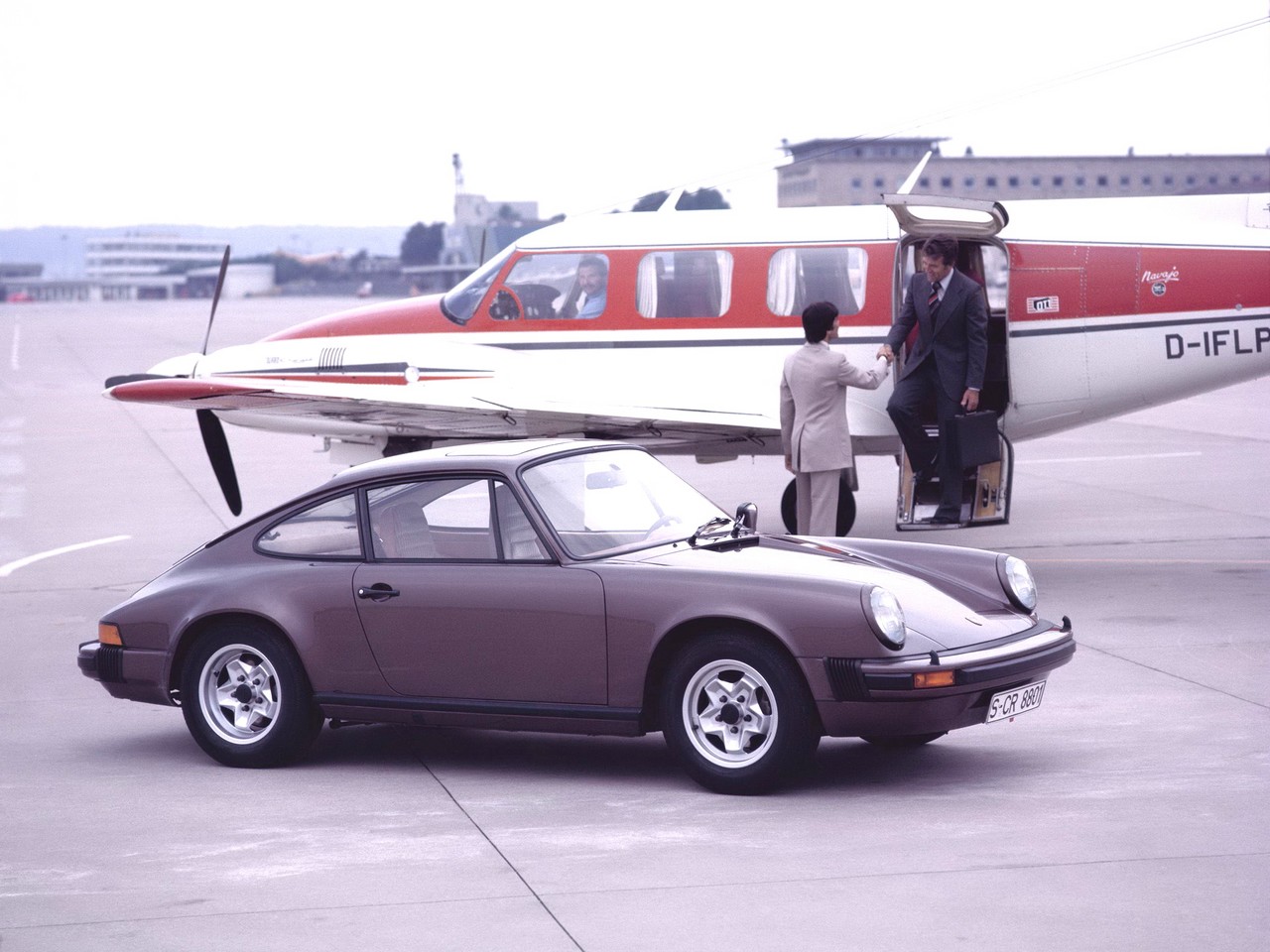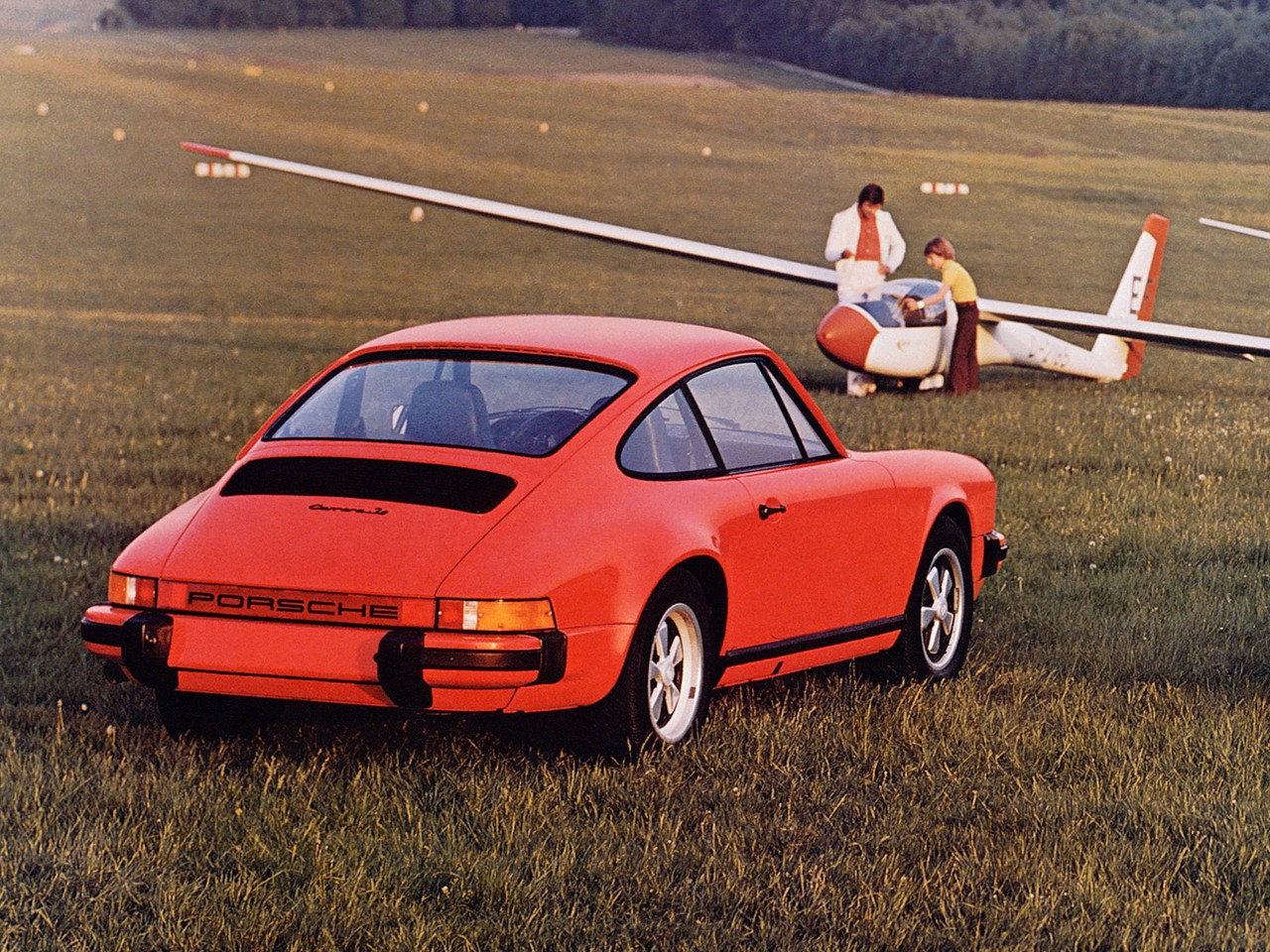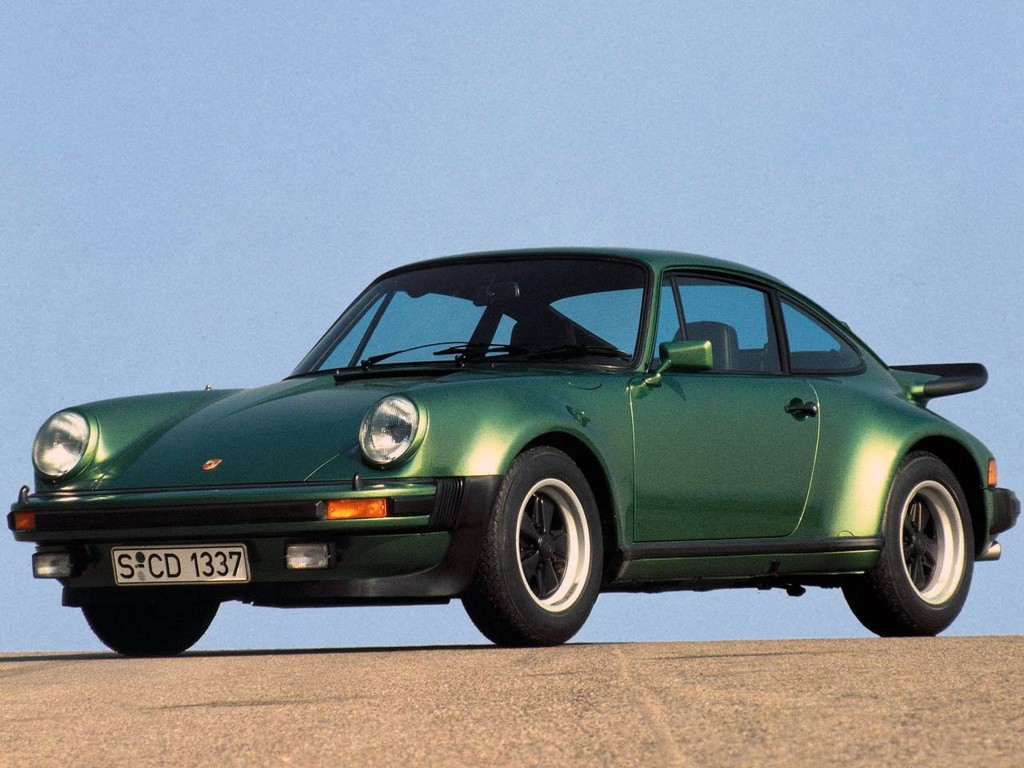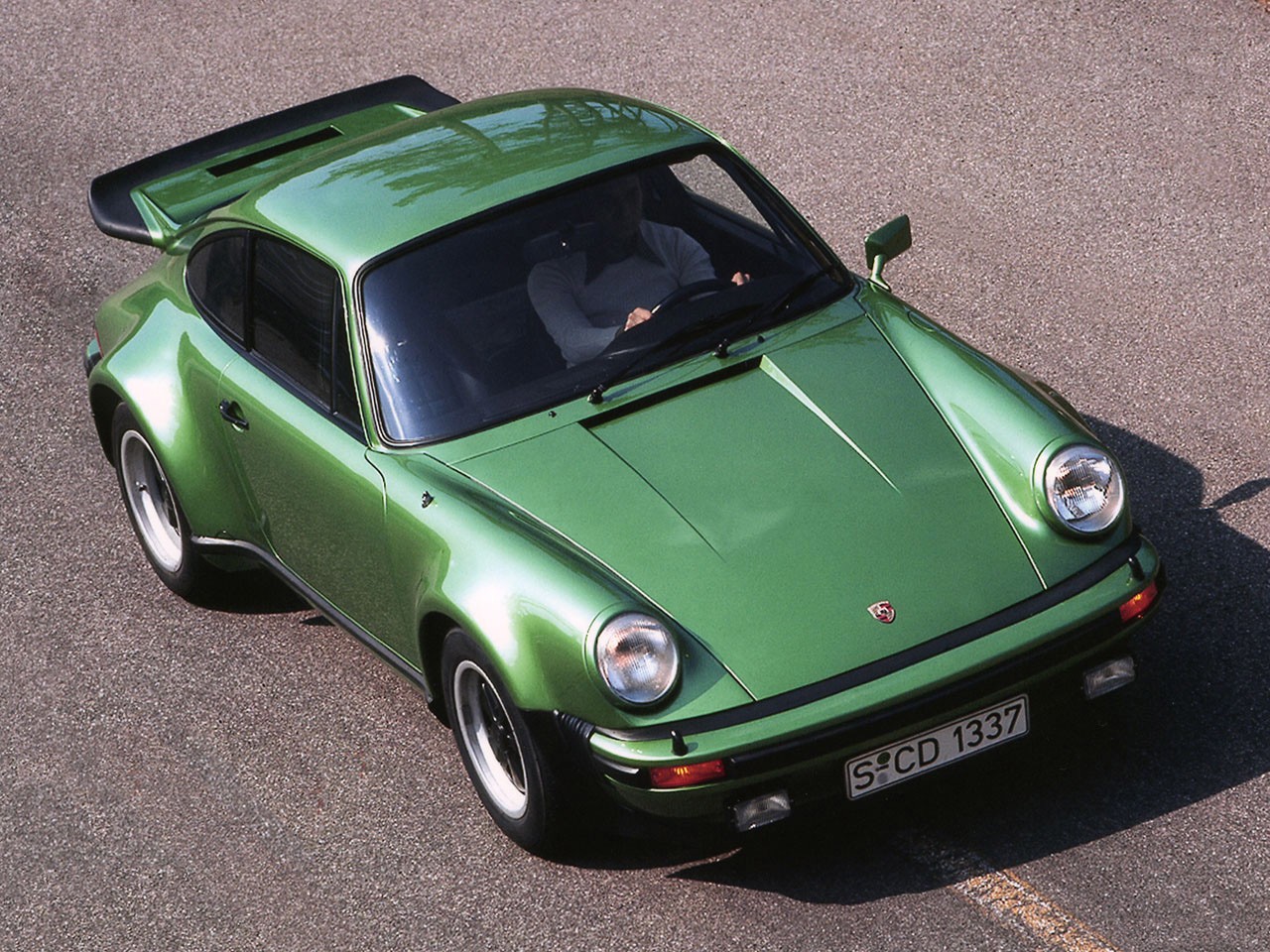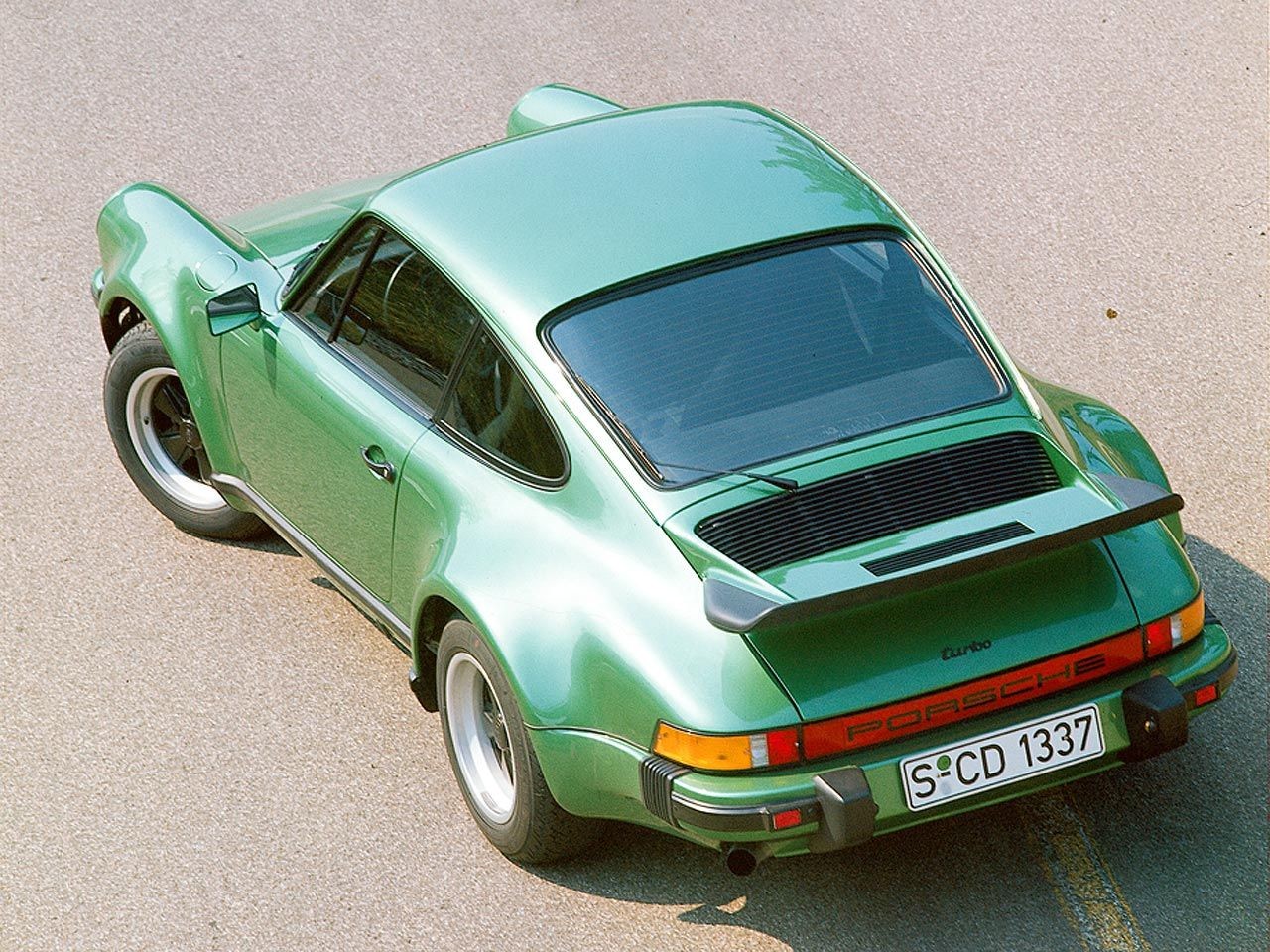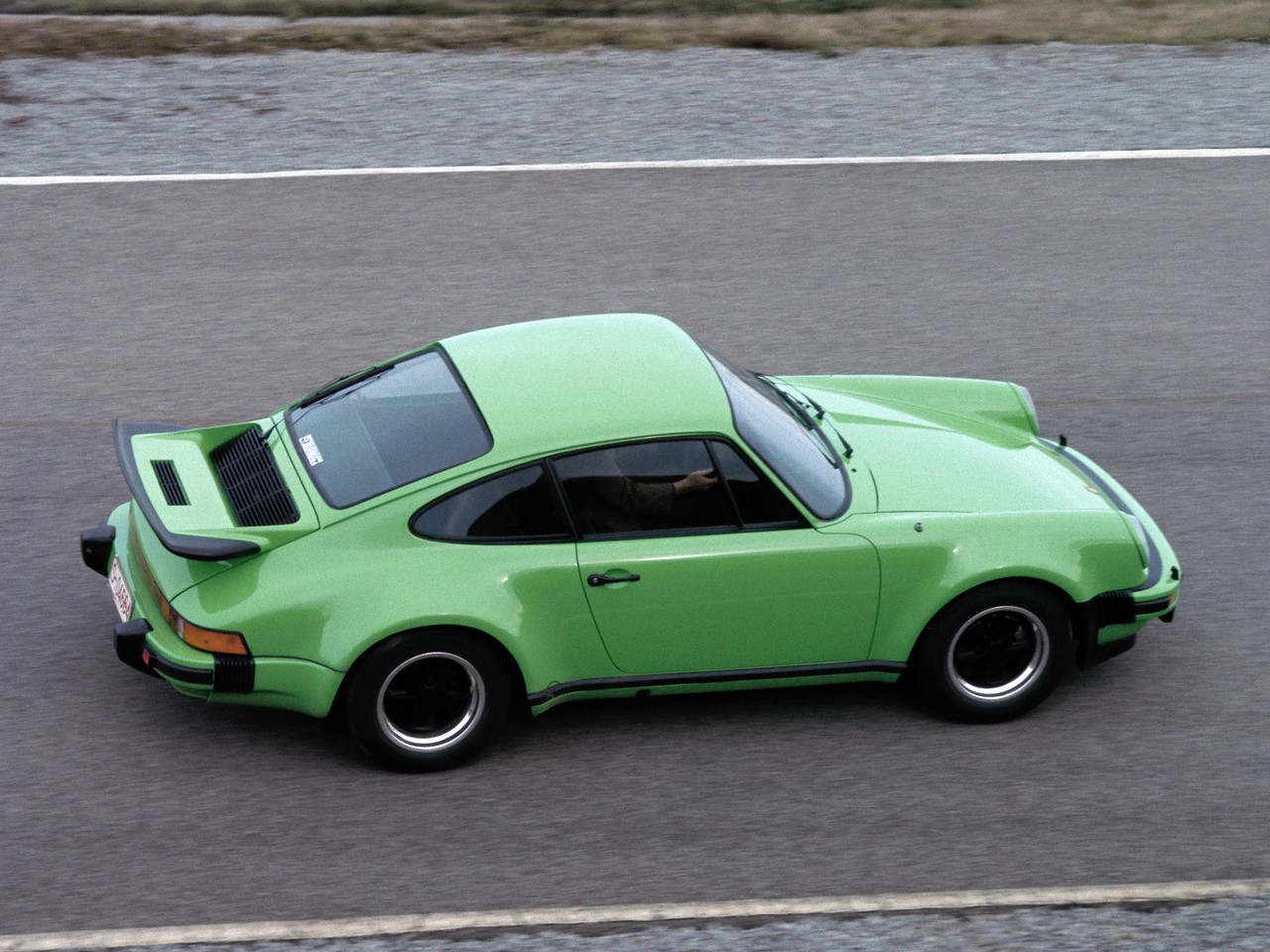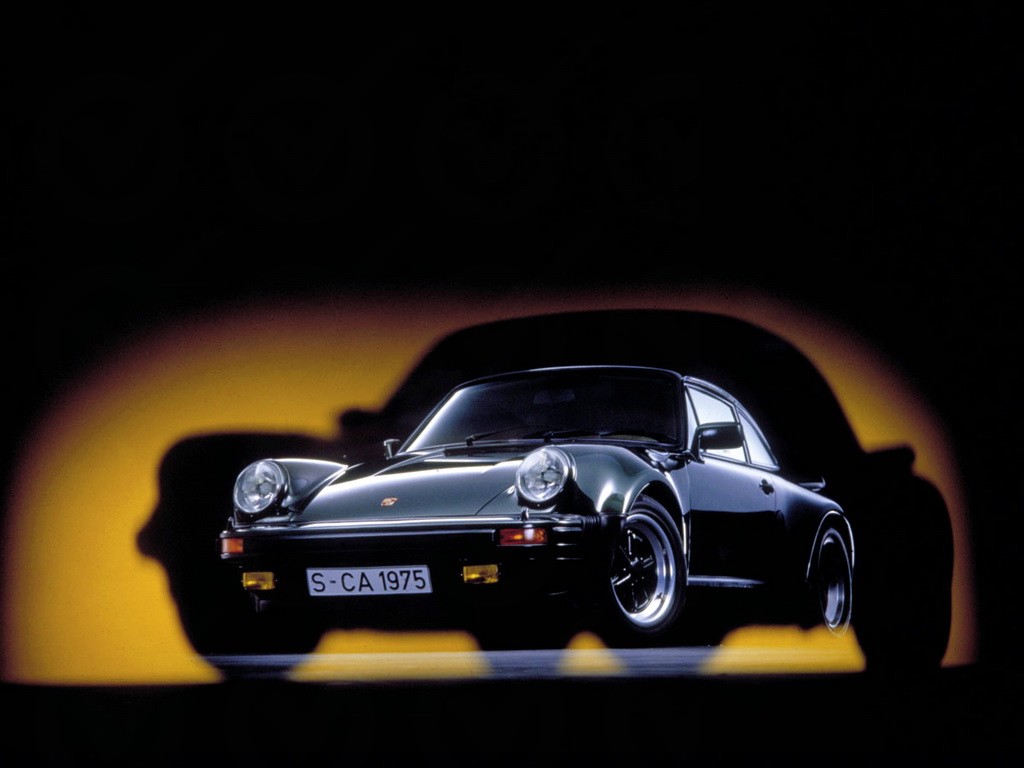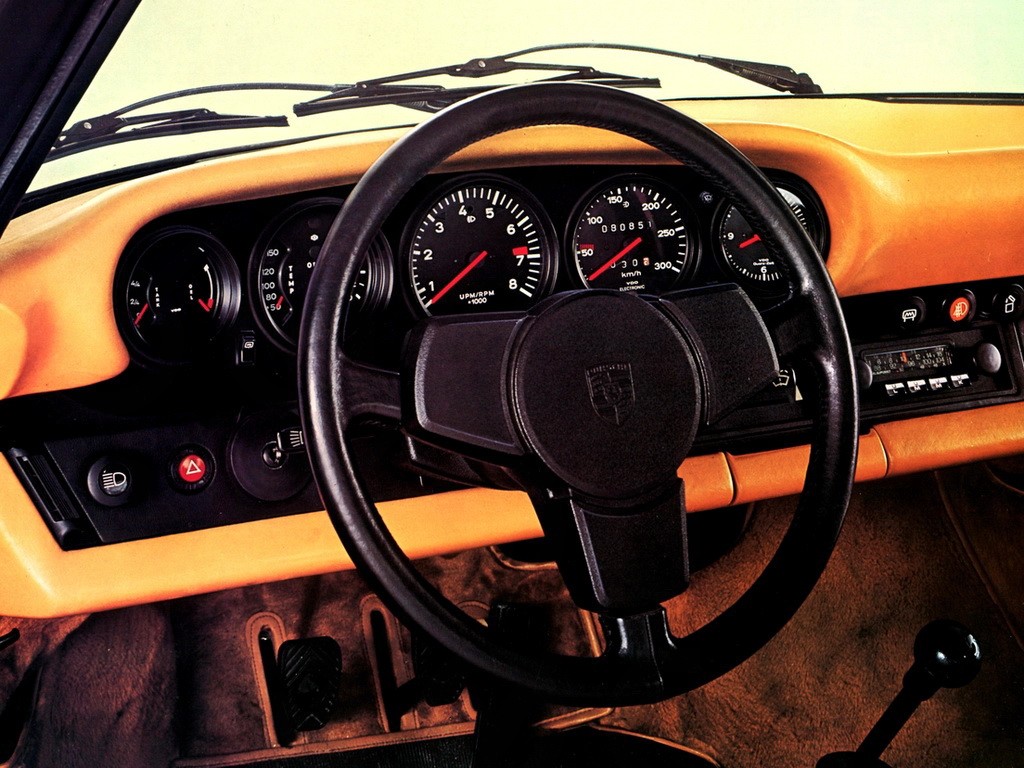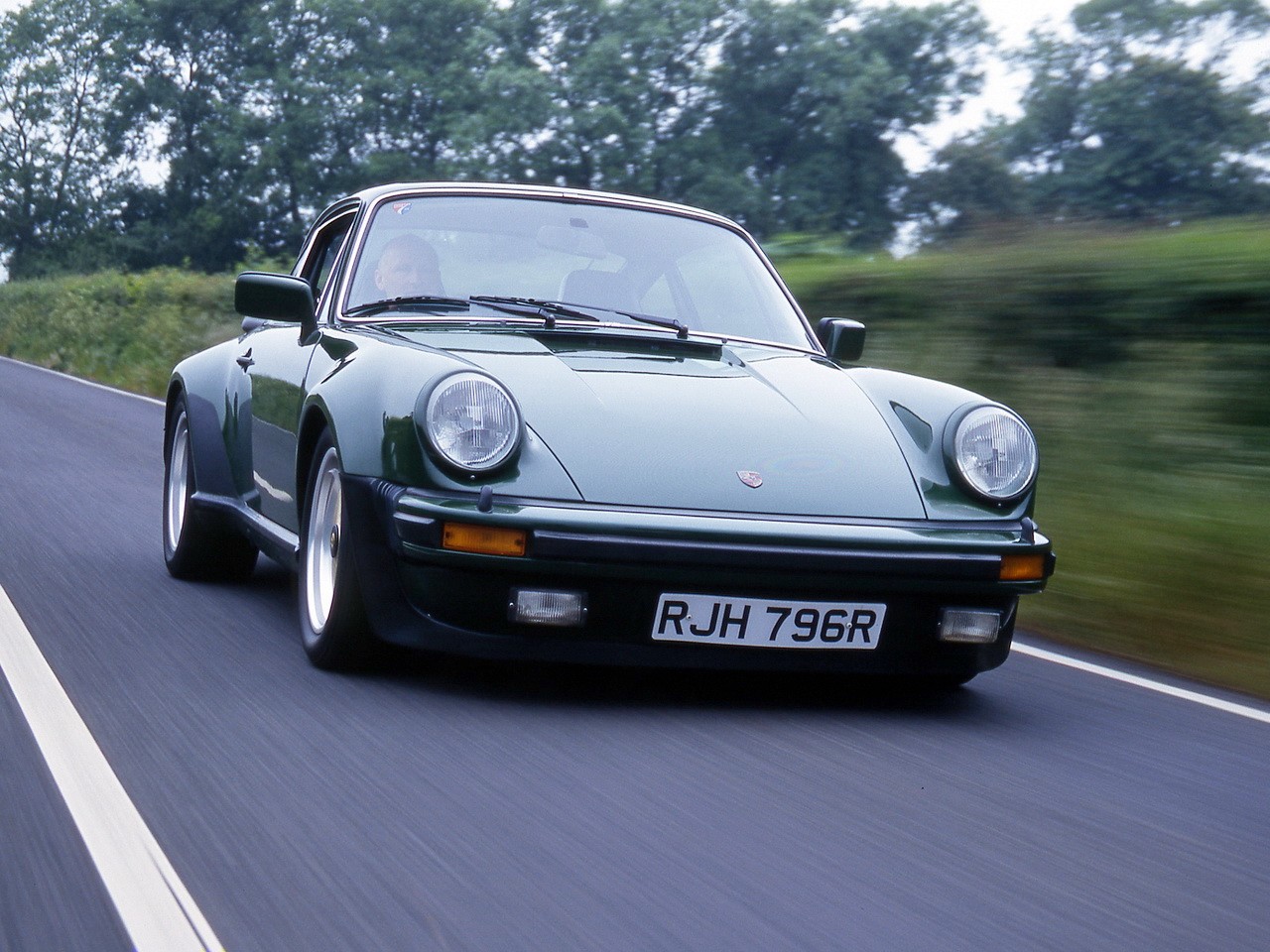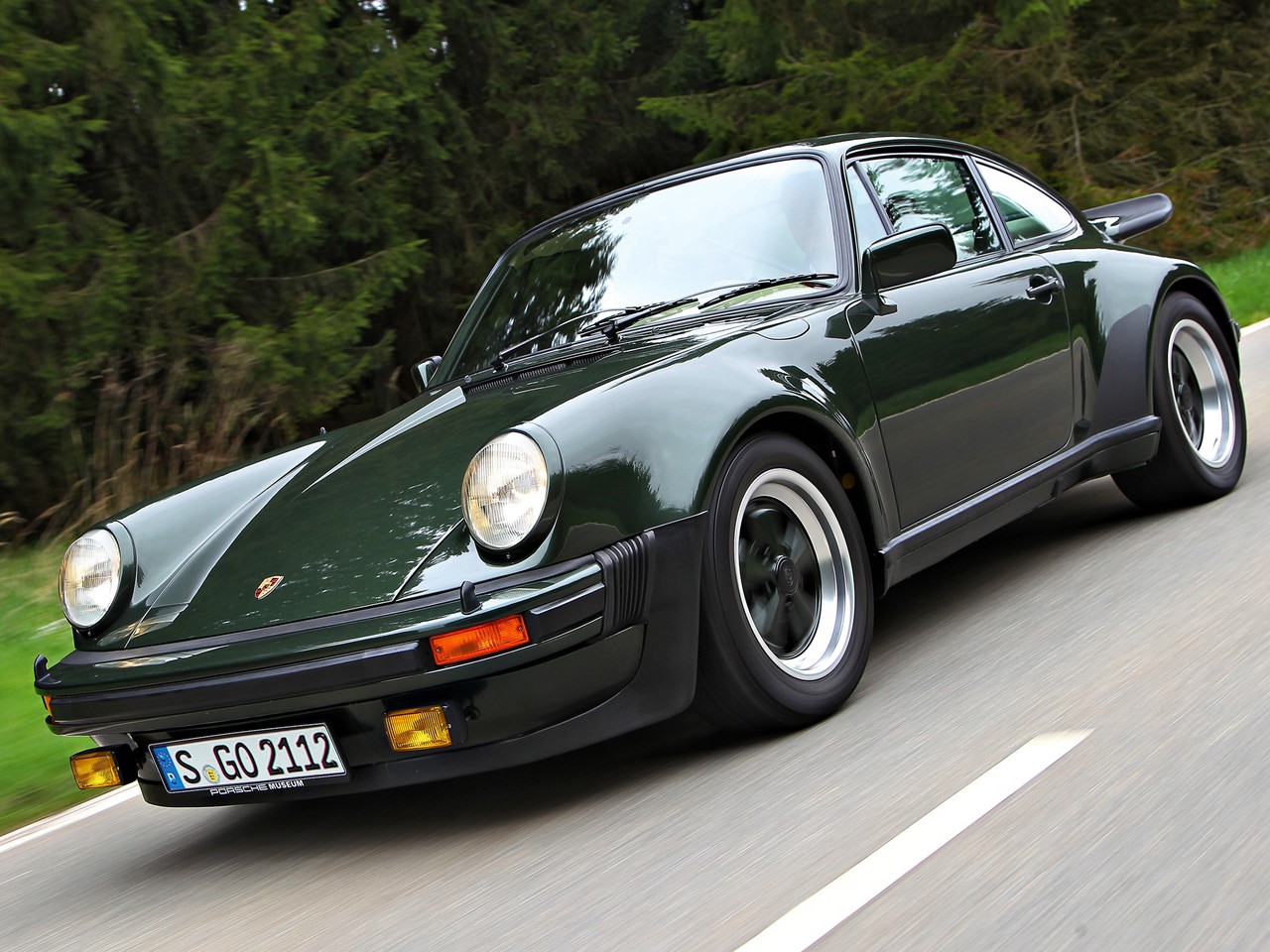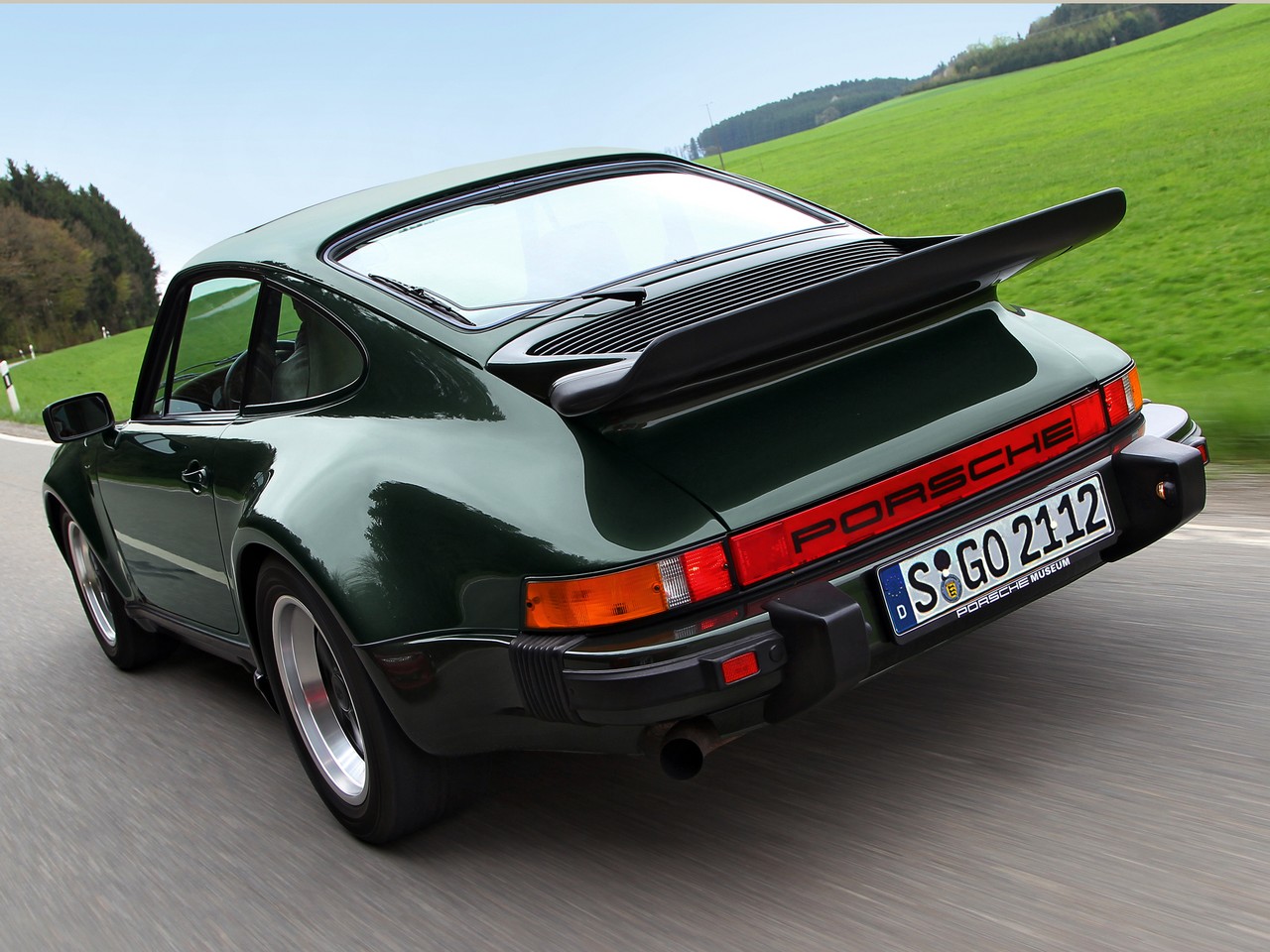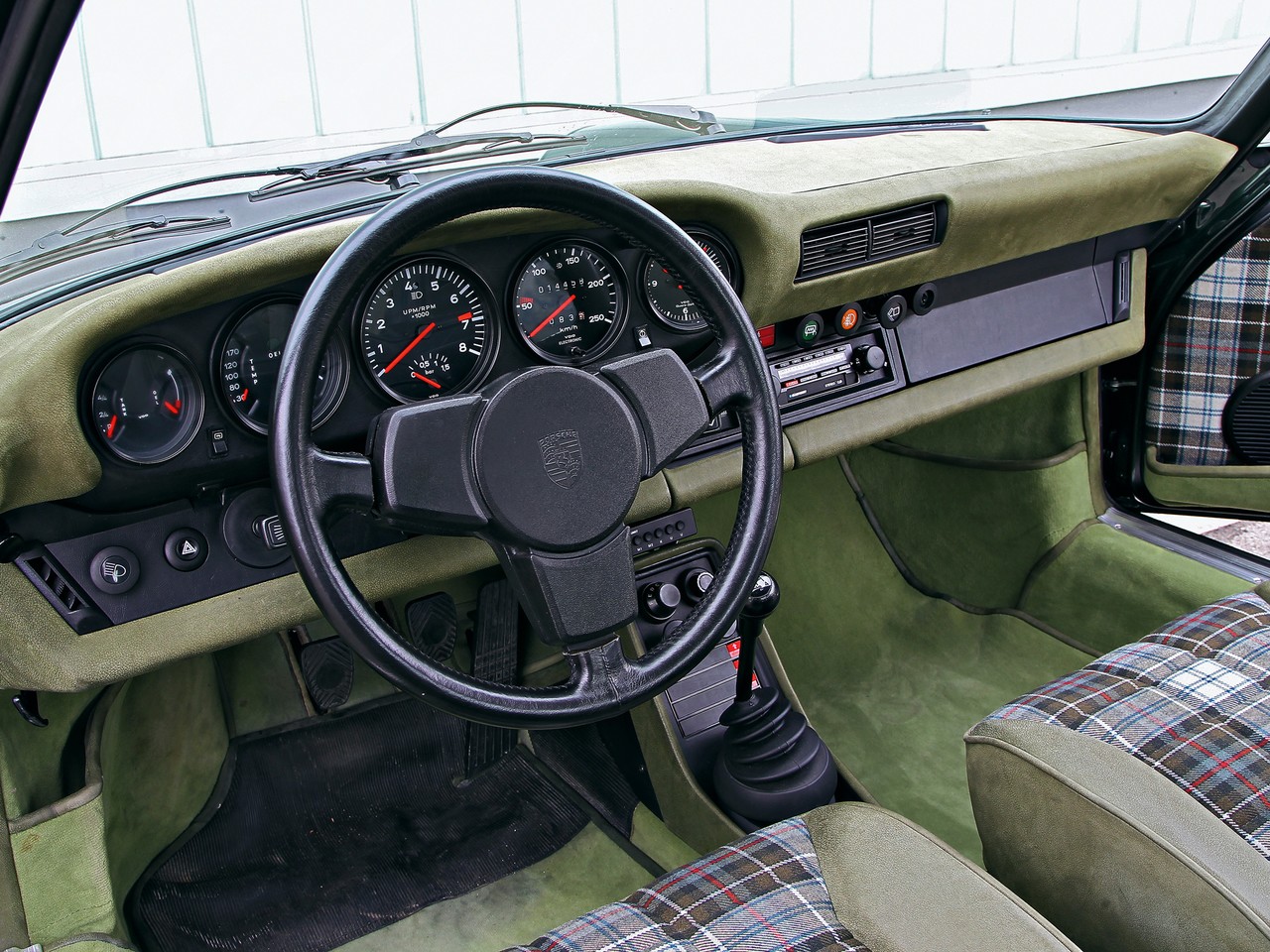
- Responsive flat six-cylinder engines
- Accomplished dynamics (within limits)
- Effective brakes
- Accurate steering
- An iconic, collectible sports car
- Firm ride
- Steering wheel kickback over bamps
- Lift-off oversteer
- Offset pedals
- For 2.7-litre G- and H-Series engines, head bolts can be pulled out of their magnesium castings and destroy the valve train.
- Chain tensioner failure can destroy the engine. Owners should consider fitting mechanical tensioner guards.
Review: Porsche G- and H-Series 911 Coupe (1973-75)
Overview
Production of the G-Series 911 Coupe commenced in August 1973 at Porsche’s Zuffenhausen factory in Stuttgart, Germany. For the 911 G-Series range, the 911, 911 S and 911 Carrera had the same 2.7-litre engine block that was first developed for the 911 Carrera RS 2.7 of 1972.
Engine
The 2.7-litre horizontally-opposed six-cylinder engine had an alloy cylinder block and head, a single overhead camshaft per cylinder bank (chain-driven), Nikasil cylinder liners, two valves per cylinder and a compression ratio of 8.5:1. While the 911 and 911 S had Bosch K-Jetronic CIS fuel injection, the 911 Carrera had Bosch (Kugelfischer) mechanical injection as per the Carrera RS 2.7.
Identification
Compared to their predecessors, the G-Series 911s could be identified by their prominent bumpers which had accordion-like rubber housings, bumper-integrated front indicators, continuous red rear reflectors bearing the Porsche name and stainless steel mufflers. Inside, there were new one-piece, high-back seats with integrated headrests and three-point inertia-reel seatbelts.
Dimensions and suspension
The G-Series 911 Coupe was 4291 mm long, 1610 mm wide, 1320 mm tall and had a 2271 mm long wheelbase. The 911 had independent front suspension with longitudinal torsion bars and lower transverse arms, while the independent rear suspension had semi-trailing arms and transverse torsion-bar springs. For the G-Series 911, however, the rear suspension had sand-cast aluminium and die-cast magnesium main rear suspension arms; Carrera variants were also fitted with Bilstein shock absorbers.
| Engine | Trans. | Years | Peak power | Peak torque | |
|---|---|---|---|---|---|
| 911 | 2.7-litre F6 | 4sp man., 5sp man., 4sp semi-auto |
1973-75 | 110 kW at 5700 rpm | 235 Nm at 3800 rpm |
| 911 S | 2.7-litre F6 | 5sp man. | 1973-75 | 129 kW at 5800 rpm | 235 Nm at 4000 rpm |
| 911 Carrera | 2.7-litre F6 | 5sp man. | 1973-75 | 154 kW at 6300 rpm | 255 Nm at 4200 rpm |
August 1974: H-Series 911
Production of the H-Series 911 commenced in 1974. Changes for these models included additional sound insulation and swing-out rear windows.
Review: Porsche I- and J-Series 911 Coupe (1975-77)
Overview
Produced from September 1975, the I-Series introduced a revised range as the 911 S was discontinued. Furthermore, the 911 Carrera received a 3.0-litre engine and the 930 Turbo was introduced – the increase in displacement for these 2993 cc engines was achieved by increasing the cylinder bores from 90.0 mm to 95.0 mm, while stroke was unchanged at 70.4 mm. The Sportomatic transmission was also changed to a three-speed unit (925.10) to meet stricter drive-by-noise standards.
Significantly, sheet steel body panels were galvanised in a zinc bath for corrosion protection from the I-Series 911 onwards. Other changes included the introduction of five-blade engine fans (previously eleven blades) and, inside, the hand-throttle was eliminated.
930 Turbo
Although in production from late 1974, Australian deliveries of the 930 Turbo only commenced in 1975. The 930 Turbo engine featured a die-cast aluminium crankcase and a KKK 3LDZ turbocharger which was mounted at the left rear of the engine and provided boost pressure of 0.8 bar, with the compression ratio reduced to 6.5:1. With its four-speed manual transmission, the 930 Turbo could accelerate from rest to 100 km/h in 5.5 seconds and had a top speed of 250 km/h.
The 930 Turbo had a distinctive body which was 123 mm wider (at 1775 mm) than the standard 911 (1652 mm) due to its flared wheel arches (housing eight-inch wide rear tyres); the 930 Turbo could also be identified by its ‘whale tail’ rear spoiler.
The 930 Turbo had 7J x 185/60 VR15 front and 8J x 216/60 VR15 rear tyres with Fuchs alloy wheels. The 930 Turbo’s suspension was, in part, based on the Carrera RS and included 19 mm front and 26 mm rear torsion bars, Bilstein gas pressure shock absorbers, 18 mm stabiliser bars front and rear, shorter rear aluminium trailing arms and wheel bearings from the Porsche 917 race car.
| Engine | Trans. | Years | Peak power | Peak torque | |
|---|---|---|---|---|---|
| 911 | 2.7-litre F6 | 4sp man., 5sp man. |
1975-77 | 121 kW at 5800 rpm | 235 Nm at 400 rpm |
| 911 Carrera | 3.0-litre F6 | 5sp man., 3sp semi-auto |
1975-77 | 147 kW at 6000 rpm | 255 Nm at 4200 rpm |
| 930 Turbo | 3.0-litre turbo F6 | 4sp man. | 1975-77 | 191 kW at 5500 rpm | 343 Nm at 4000 rpm |
August 1976: J-Series 911
Produced from August 1976, the J-Series 911 introduced a backfire relief valve that allowed excess pressure to escape. Inside, the dashboard had new air vents and a ‘brake failure’ warning light was added. Vehicle security was also improved as the opening front quarter windows were discontinued and the doors gained a roller dock locking mechanism (replacing the sill-mounted buttons).
The J-Series 930 Turbo was fitted with 16-inch alloy wheels with 205/55 VR front and 225/50 VR rear tyres and a 20 mm front stabiliser bar (previously 18 mm). Inside, there was a new centre console with illuminated controls, new materials and a boot gauge within the tachometer. The fuel system, however, was also upgraded as the fuel pumps, fuel filter and fuel pressure accumulator were all replaced.
Related links
